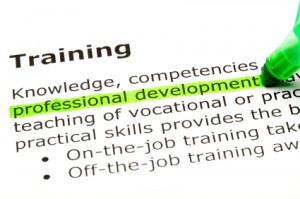
Designing Your Agency Training Program, Part 2

Ok, so you’ve asked for and gotten a commitment for active support from the top (and if you’re the agency leader, you’ve committed to giving it), and done your research so that you can build the program around the agency’s strategic and professional development goals and client performance on agency feedback. You’ve probably started to lay out an outline of key must-haves. You might even feel that you’re ready to go deep.
Stop right there.
Before doing so, you need to get specific input from three important sources:
1) Get feedback from agency leadership: This includes not just the CEO, but other senior executives. What’s each one’s view on training program must-haves vs. nice-to-haves? What are the skill areas that they feel must be improved this year? What are the skill areas in which they feel the majority of the staff are particularly strong? Are there specific topics or growth areas that certain title/levels need more than others? You may be surprised at the differences of opinions among this group. Feedback from a variety of them will help you create a program that all will value and support.
2) To be effective, your program must be valued by staff members at all levels. So get feedback from key team members across a variety of levels. Learn which topic areas they and their peers feel are the most important to improve. It also helps to learn the areas in which they feel they’re strong. (And it will be interesting to see how they view their strengths and weaknesses vs. management’s perspective on this.)
Make sure your list includes internal agency influencers. These are the agency employees who have outsized influence on many others throughout the agency, regardless of the influencer’s title. When I was an EVP at Marina Maher Communications, one of the most influential was Annie Heckenberger. (I’m sure my MMC alum will concur.) Annie now wields her considerable social media magic on behalf of the fortunate clients of Philadelphia-based integrated communications firm Red Tettemer and if you follow her, you can imagine this being the case.)
If you stop and think about it, you know who they are. Like Annie, they’re always willing to share their feedback. Getting it will help you design a better program, and they’ll ultimately play a role in helping build agency-wide support for it.
3) Do research to understand what communications leaders feel are the critical future growth skills, and make sure your program addresses them. Don’t stop there. Do the same research within related fields, such as marketing and branding circles, and within the industries in which your key clients ply their trades. After all, you want your training program to help turn your staff into experts not only in PR/communications, but in your clients’ industries.
Now you’re ready to Design The Program. I’ll address this in a future post.
